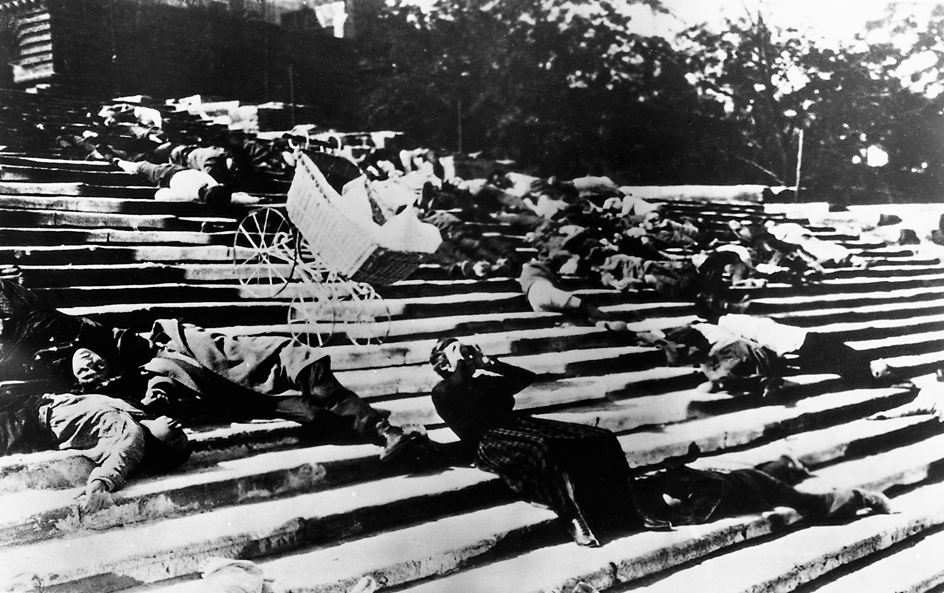Potemkin is a Russian silent motion picture written and directed by Sergei Eisenstein in 1925. The movie ranks among the masterpieces of filmmaking. Its full name is The Battleship Potemkin. In 1948 and 1958, panels of judges voted Potemkin the greatest film ever made.

The film describes the mutiny aboard the Russian battleship Potemkin in 1905 near the Russian seaport city of Odessa. The mutiny led to a rebellion against the czar by the citizens of Odessa.
Eisenstein’s use of montage in Potemkin revolutionized filmmaking. Montage is an editing technique in which shots are arranged in sequence to suggest a symbolic meaning. For example, a shot of the angry ship’s crew, combined with soup bubbling in a kettle, implies that the sailors’ resentment will boil over into mutiny. The film is a classic of rapid editing, with 1,300 separate shots in the 75-minute movie. The most famous scene shows troops marching down the steep Odessa Steps, killing panic-stricken civilians as they descend.
The Communist government of the Soviet Union commissioned the film as propaganda to help commemorate the 20th anniversary of the mutiny. The movie was originally intended to be only an episode in an epic celebrating the Revolution of 1905 in Russia, but it was expanded into a full-length feature.
See also Eisenstein, Sergei Mikhailovich .
